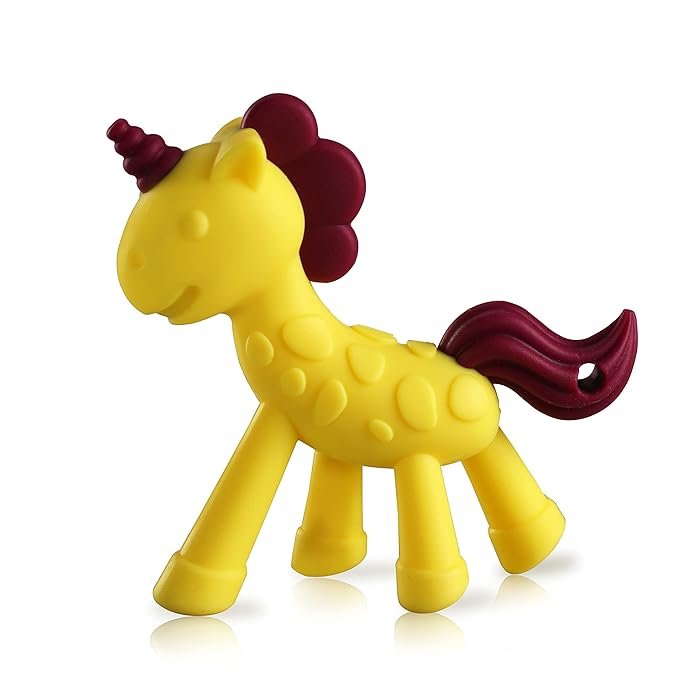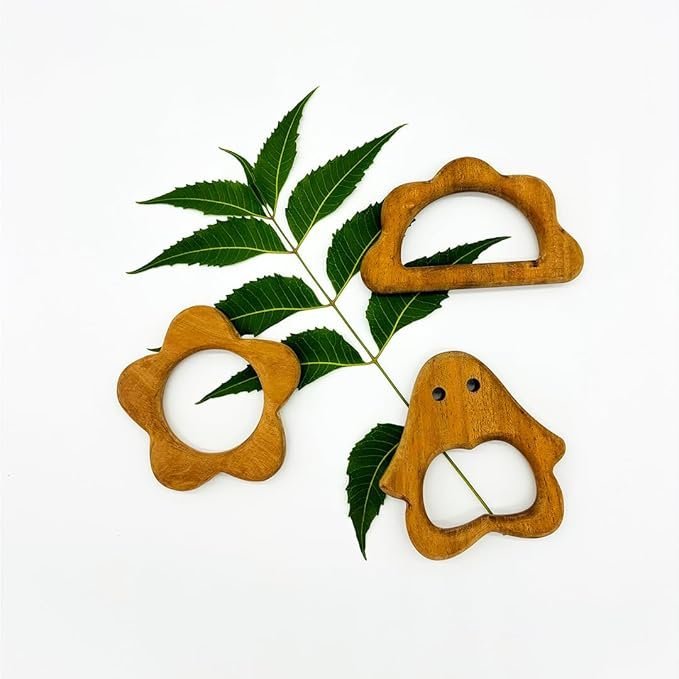Becoming a parent is a journey full of joy, love, and countless responsibilities. As a mom, I cherish every milestone my little one reaches, but I also understand the challenges that come with each stage of growth. One of the most trying times was when my daughter started teething. Her restlessness and gum irritation were tough to watch, and I wanted nothing but comfort for her. That’s when I decided to get my kid’s first teether—but not without doing my homework first. After hours of research, I realized how crucial it is to choose the right one. A teether isn’t just a toy; it’s something our babies nibble on all day, so quality and safety are non-negotiable.
With that in mind, I wanted to share what I learned with other parents navigating the same path. Whether you’re preparing for your baby’s teething phase or already there, I hope this guide helps you find the perfect teether to ease their discomfort safely and effectively.
What are teethers?
Teethers are specially designed toys or objects that help soothe a baby’s gums during the teething phase. When babies begin teething, typically around 4 to 7 months, their gums can become sore, swollen, and irritated as teeth push through. Teethers provide a safe and comforting surface for babies to chew on, relieving pressure and reducing discomfort.
Beyond soothing gums, teethers also support sensory and oral motor development, helping babies improve hand-eye coordination and explore textures, shapes, and materials in a safe manner.
Benefits of Teethers
- Soothes Gum Pain: Teething can cause discomfort, and teethers provide relief by massaging tender gums.
- Encourages Oral Development: Chewing on a teether supports oral motor skills and strengthens jaw muscles.
- Promotes Sensory Exploration: Teethers come in various textures and shapes, enhancing sensory development.
- Reduces Restlessness: They help keep babies engaged and distracted from teething discomfort.
- Safe Chewing Alternative: They provide a safe and hygienic option for babies to nibble on, reducing the risk of chewing unsafe objects.
How to Choose your Kid’s First Teether?
- Material: Prioritize non-toxic options like food-grade silicone, natural rubber, or untreated wood.
- Design: Look for easy-to-hold shapes with textured surfaces to massage gums.
- Safety: Ensure it’s free of BPA, phthalates, and PVC, and complies with safety standards.
- Ease of Cleaning: Opt for teethers that are dishwasher-safe or easy to sanitize.
- Durability: Choose a sturdy teether that withstands chewing without breaking or leaking.
Tips for using teether
- Clean Before Use: Always wash the teether before giving it to your baby to ensure hygiene.
- Check for Wear and Tear: Regularly inspect the teether for damage to prevent choking hazards.
- Use Only When Needed: Use the teether when your baby shows signs of discomfort or gum irritation.
- Cool It (If Applicable): Some teethers can be chilled in the fridge for added relief, but never freeze them.
- Supervise Use: Always supervise your baby while they’re using a teether to ensure safety.
Types of Teethers
Natural Rubber teether
A natural rubber teether is a teething aid made from natural rubber, derived from the sap of the Hevea tree. These teethers are valued for being eco-friendly, biodegradable, and free from harmful chemicals like BPA, phthalates, and PVC, making them a safe choice for babies. Natural rubber teethers are soft yet durable, providing a soothing texture for tender gums. You may choose them for their non-toxic properties, as well as their gentle, natural feel that mimics the softness babies find comforting during the teething process.
One of the best teethers I found for my little one was the Sophie La Girafe Teether. My daughter absolutely loved it! Made from natural rubber and painted with natural colors, it’s soft, soothing, and perfect for chewing. Although it’s a bit pricey, I feel it’s worth every penny for the comfort it provides. The only downside I noticed was that after a couple of months, the colors began to fade, and signs of wear and tear appeared. Still, it was a fantastic companion during her teething journey!

Silicon Teether
A silicone teether is a teething aid made from high-quality, food-grade silicone, which is non-toxic, durable, and safe for babies. Silicone teethers are lightweight, easy to hold, and often come in fun shapes and textures that provide soothing relief to a baby’s sore gums during teething. They are resistant to bacteria, easy to clean, and free from harmful substances like BPA and phthalates, making them a popular choice among parents. You may choose them for their soft yet firm texture helps massage gums effectively while being gentle on delicate mouths.
Another teether I tried for my baby was a Luvlap Silicone Teether from Luvlap, a brand I trust for quality baby products. While it wasn’t as soft and comforting as the natural rubber teether, it was still a great choice. Silicone teethers are available in various shapes and budgets, making them versatile. What impressed me most was their durability—despite prolonged use, it looked as good as new. It’s a practical and reliable option for teething babies.

Wood Teether
A wood teether is a natural and eco-friendly option made from untreated, non-toxic wood, such as beech, maple, or birch. These teethers are durable, safe, and naturally antibacterial, making them a hygienic choice for babies. The firm texture of wood provides excellent relief for sore gums while also supporting sensory exploration. Many wood teethers are crafted without paints or chemicals, ensuring they are safe for babies to chew on. You may choose wood teethers for their sustainability and timeless appeal.
I haven’t personally used a wooden teether, but they can be a great choice if you prefer natural materials like wooden toys for your baby. If you decide on a wood teether, pay attention to the design and finish—it should have smooth edges to avoid harming your baby’s gums and should be unpainted, as paint quality can be questionable. The Zantva Organic Wooden Teether caught my attention as a good option, offering a safe and natural alternative for teething relief.

Gel/Water Filled Teether
A gel-filled teether is a type of teething aid that contains a soft, non-toxic gel inside, designed to provide additional comfort for a baby’s sore gums. These teethers are often chilled in the refrigerator to enhance their soothing effect, as the coolness helps numb the gums and reduce inflammation. The gel filling provides a squishy texture that babies can chew on for relief. While convenient and effective, parents should ensure the teether is durable, properly sealed, and regularly inspected for wear to avoid leaks.
I haven’t used gel-filled teethers personally, but from what I’ve read, they can be very helpful for teething babies. You can refrigerate them, and the cold sensation provides relief for irritated gums. However, I had concerns about safety, as gel-filled teethers could leak if damaged. If you choose to try one, always opt for a trusted brand made with non-toxic materials. If you want to try one
Conclusion
Teethers are essential tools for soothing a baby’s teething discomfort while promoting oral and sensory development. Choosing the right teether ensures not only comfort but also safety and hygiene for your little one. Whether made of silicone, natural rubber, or wood, a thoughtfully selected teether can turn a challenging teething phase into a manageable experience. By following usage tips and prioritizing high-quality materials, you can give your baby the relief they need and support their growth with confidence.
Note: This blog contains affiliate links. If you make a purchase through these links, I may earn a small commission at no additional cost to you. This helps support the blog and allows me to continue sharing valuable content. Thank you for your support!

